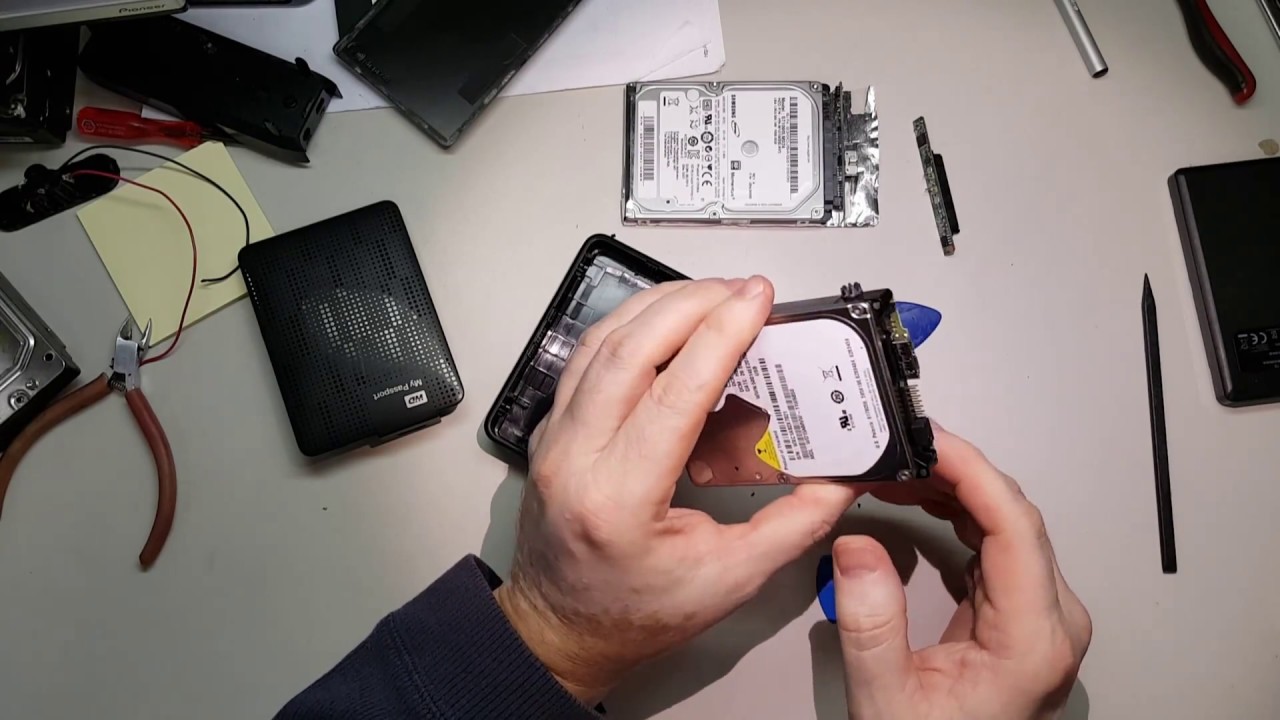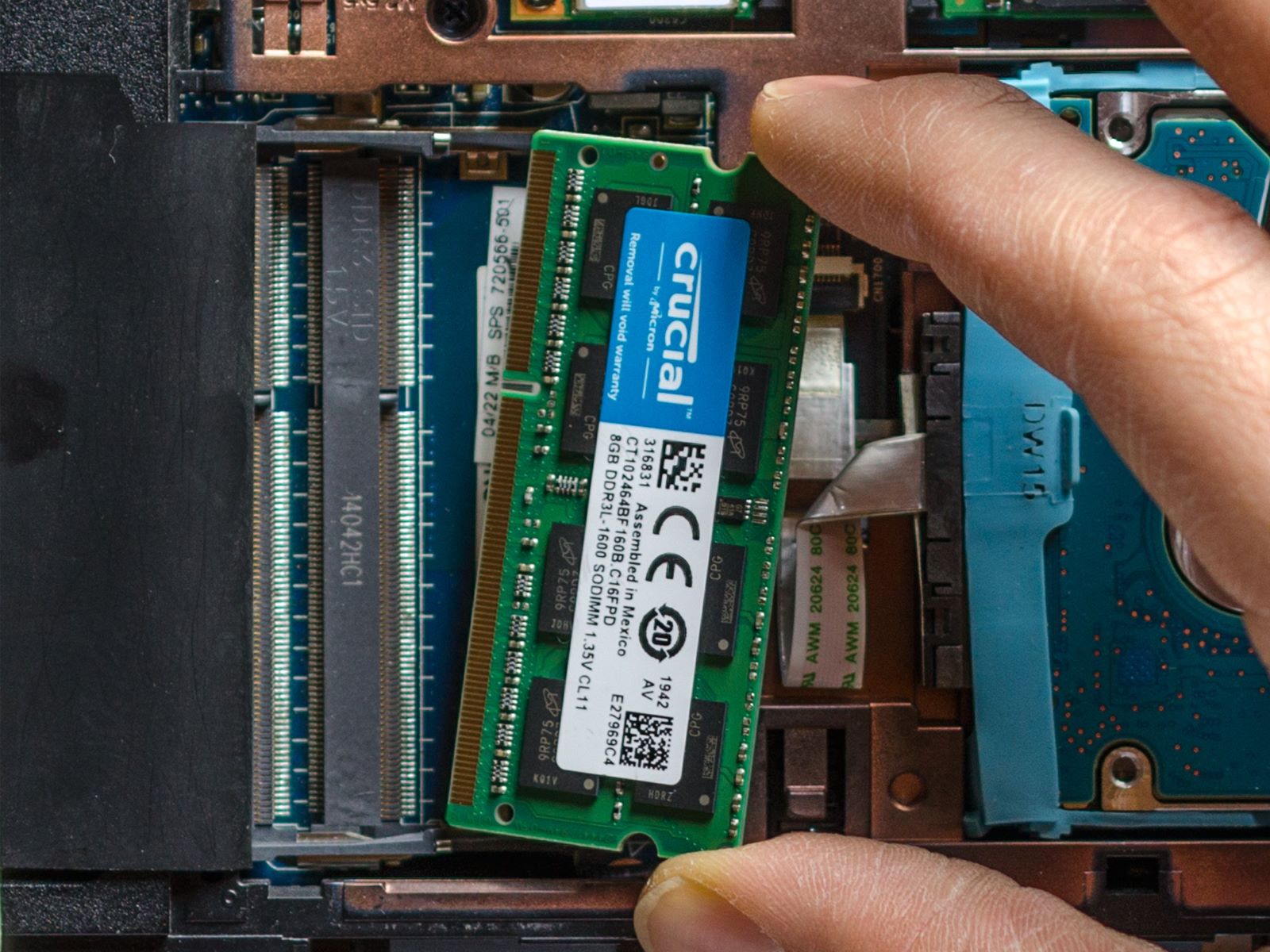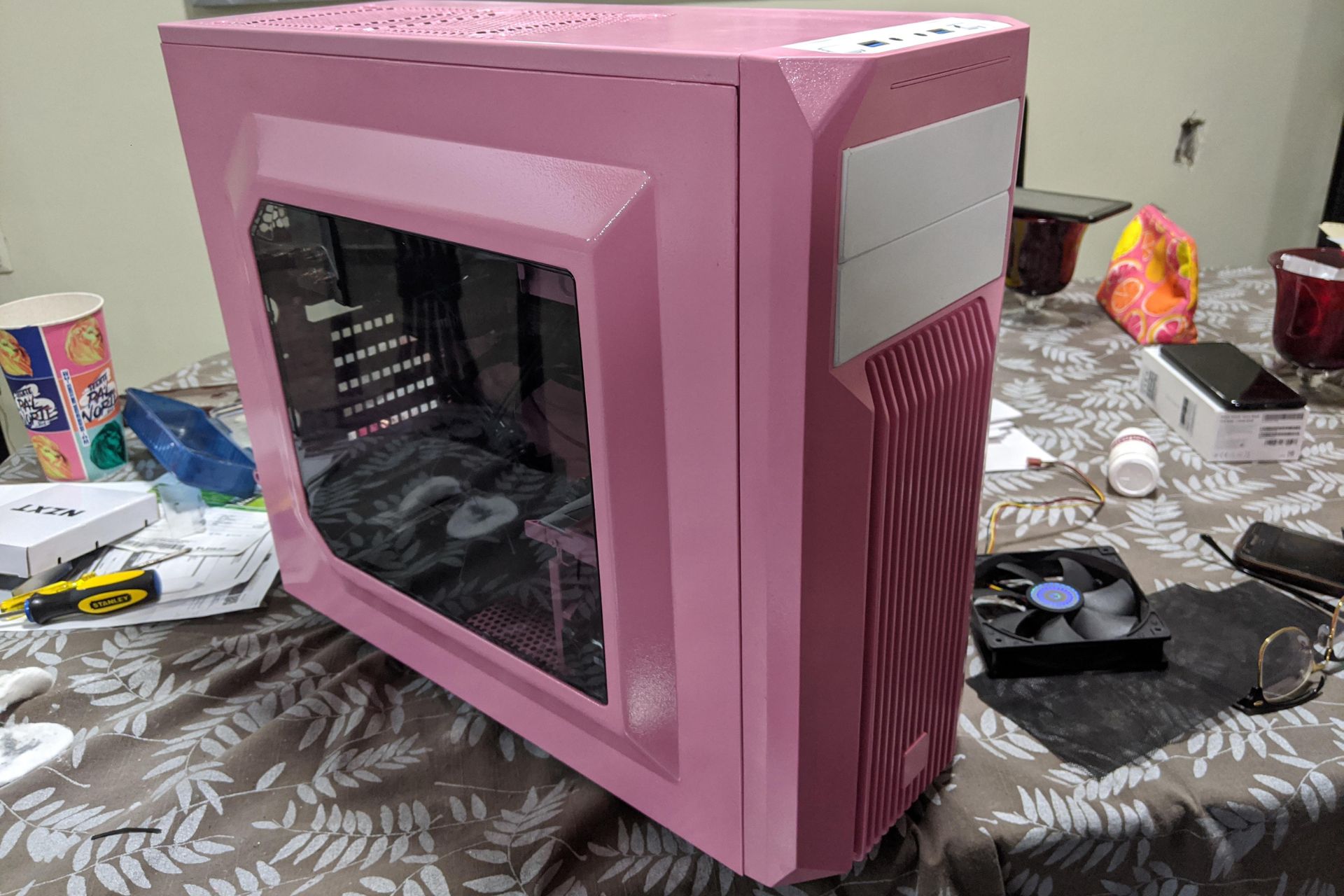Introduction
Welcome to our guide on how to fix dents in a PC case. A dent in your PC case is not only unsightly but can also affect the overall performance and airflow of your computer. Whether it’s a small dent caused by an accidental bump or a larger dent from a more significant impact, there are several methods you can try to restore your PC case to its original condition.
In this article, we will explore various techniques using everyday tools and materials that you may already have at home. While some methods are more straightforward and require minimal effort, others may involve more specialized tools or potentially hazardous procedures. We will outline each method and provide step-by-step instructions to help you decide which approach is most suitable for your specific situation.
Please note that these methods are primarily intended for minor to moderate dents in PC cases made of materials such as aluminum or steel. They may not be suitable for severe damage or cases made from different materials such as plastic or glass. In such cases, we recommend seeking professional assistance or considering replacement options.
Before we dive into the different methods, it’s essential to emphasize safety precautions. Make sure to take necessary precautions by wearing protective gear such as gloves and safety glasses. Additionally, ensure you are working on a stable surface and follow the instructions carefully for each method to avoid any potential injuries or further damage to your PC case.
Now, let’s explore the tools and materials you will need for these dent-fixing methods and how to assess the damage to determine the most suitable approach.
Tools and Materials Needed
Before you start fixing the dent in your PC case, it’s important to gather the necessary tools and materials. Here’s a list of items you may need:
- Protective gloves
- Safety glasses
- Plunger
- Boiling water
- Hairdryer
- Compressed air canister
- Vacuum cleaner
- Rubber mallet
- Heat gun
- Dry ice
- Silicone baking mat
These tools and materials will be used for different dent-fixing methods, each with its own unique approach. Consider the type and size of the dent to determine which method will likely yield the best results. Having all the necessary tools and materials ready will help streamline the repair process and ensure you can complete it effectively.
It’s important to note that some methods may require additional precautions or specific tools. For example, using a heat gun or dry ice may involve exposing the PC case to high temperatures or extremely cold conditions, respectively. Always follow the instructions for each method carefully to ensure your safety and the integrity of your PC case.
Now that you have an idea of the tools and materials needed, let’s move on to the next section, where we’ll learn how to assess the damage on your PC case.
Assessing the Damage
Before proceeding with any dent-fixing method, it’s crucial to assess the damage on your PC case. Understanding the extent of the dent will help you determine the most appropriate approach for repair. Here are the steps to assess the damage:
- Inspect the dent: Look closely at the dent to determine its size, shape, and depth. Is it a small indentation or a larger, more noticeable deformity? Take note of any accompanying scratches or paint damage as well.
- Check for structural integrity: Gently press on the surrounding area of the dent to ensure the PC case’s structural integrity. If you notice any cracks or if the case feels weak, it’s best to seek professional help or consider replacing the case altogether.
- Consider the accessibility: Take note of the dent’s location and accessibility. Some methods may require access to both the inside and outside of the case, while others may only require external access.
- Evaluate the material: Determine the material your PC case is made of. Most cases are constructed from aluminum or steel, but there are also cases made of plastic or tempered glass. Different materials may require specific repair approaches or professional assistance.
- Document the damage: If desired, take pictures or make a note of the dent’s size, shape, and location. This can help you track the progress of the repair and serve as a reference if you decide to seek professional help later.
By carefully assessing the damage, you’ll have a better understanding of the dent’s severity and the appropriate method to use for repair. Keep in mind that while some methods may be effective for small and shallow dents, larger or more complex dents may require a combination of techniques or professional intervention.
With the assessment completed, we can now proceed to explore various dent-fixing methods. In the next sections, we’ll provide step-by-step instructions for each technique, allowing you to choose the method that best suits your PC case and dent’s characteristics.
Method 1: Using a Plunger
Using a plunger is a simple and effective method to fix minor dents in your PC case. Here’s how to do it:
1. Begin by ensuring you have a flat-topped plunger, preferably with a larger suction cup. This will provide better grip and suction for the dent removal process.
2. Moisten the suction cup of the plunger to create a better seal. You can use water or a small amount of petroleum jelly on the rim of the cup.
3. Place the plunger over the dent, ensuring it covers the entire affected area.
4. Press the plunger firmly against the dent and create a suction by pushing it inward. You should feel resistance as the suction takes effect.
5. Once the suction is created, pull the plunger outward forcefully to create a vacuum effect. This motion should help to pop the dent back into its original shape.
6. Repeat the process as needed, applying firm pressure and pulling the plunger in various directions to maximize the dent’s removal.
7. Inspect the PC case after each attempt to assess the dent’s progress. If the dent is not fully resolved, repeat the process until you achieve the desired result.
8. Once the dent is fixed, clean the area with a damp cloth to remove any residue from the plunger.
Using a plunger can be an effective solution for minor dents that have not caused any structural damage. However, please note that this method may not be suitable for deeper or more significant dents. In such cases, it is advisable to explore other dent-fixing techniques or seek professional assistance.
Remember to exercise caution and be mindful of your PC case’s material and its vulnerability to pressure. Apply even force and avoid excessive pressure to prevent any further damage to the case.
Now that you’ve learned how to use a plunger to fix dents in your PC case, we’ll move on to the next method: using boiling water.
Method 2: Using Boiling Water
Using boiling water is another effective method to fix dents in your PC case, particularly for plastic cases. This technique helps soften the plastic, making it more malleable for dent removal. Here’s how to use boiling water to fix dents:
1. Boil a pot of water on the stove or using a kettle. Ensure you have enough water to submerge the affected area of the PC case.
2. Carefully pour the boiling water over the dent, ensuring it covers the entire affected area. Be cautious not to burn yourself during this process, as boiling water can cause serious injuries.
3. Allow the hot water to sit on the dent for a few minutes to soften the plastic. This will make it more pliable and easier to reshape.
4. Once the plastic has softened, use your hands or a flat object, such as a spoon or a plastic card, to push the dent back into its original shape. Apply even pressure and work gradually to avoid damaging the case.
5. Gently massage the area around the dent, using your fingers or the flat object, to smooth out any creases or misshapen areas.
6. If necessary, repeat the process with boiling water until you achieve the desired results. However, be cautious not to overheat the plastic, as excessive heat may cause further damage.
7. Allow the PC case to cool down completely before assessing the dent. This will ensure that the plastic has regained its rigidity and the dent has been fixed properly.
Using boiling water is particularly effective for plastic cases, as the heat softens the material for easier manipulation. However, it’s important to note that this method may not be suitable for cases made of other materials such as aluminum or steel. In such cases, consider exploring alternative dent-fixing methods.
Remember to take necessary precautions when working with boiling water, as it can cause severe burns. Wear protective gloves and handle the hot water with care to ensure your safety.
Now that you know how to use boiling water to fix dents in your PC case, let’s move on to the next method: using a hairdryer and compressed air.
Method 3: Using a Hairdryer and Compressed Air
Another effective method to fix dents in your PC case involves using a hairdryer and compressed air. This technique applies heat to the affected area, allowing the material to expand and regain its original shape. Here’s how you can use a hairdryer and compressed air to fix dents:
1. Begin by plugging in the hairdryer and setting it to a medium or high heat setting. Make sure to keep the hairdryer at a safe distance from the PC case to avoid any damage or overheating.
2. Direct the hot air from the hairdryer onto the dent. Move the hairdryer back and forth, evenly heating the area. Be cautious not to concentrate the heat in one spot for too long, as this may cause the case to warp or melt.
3. Continue heating the dent for a few minutes until the material becomes warm and pliable. This indicates that the plastic or metal is ready for reshaping.
4. Once the dent is sufficiently heated, turn off the hairdryer and immediately use a can of compressed air to spray the affected area. The cold air from the can will cause the material to contract and help pop the dent back into place.
5. Spray the compressed air in short bursts, focusing on the center of the dent and working your way outward. This will provide the maximum impact and assist in restoring the case to its original shape.
6. Assess the dent after each attempt and repeat the process if necessary until the desired result is achieved. Remember to take breaks in between attempts to allow the PC case to cool down.
7. Once the dent is fixed, use a clean cloth to wipe away any residue or debris left by the compressed air or hairdryer.
Using a hairdryer and compressed air is an efficient method for repairing minor dents in your PC case. However, keep in mind that this technique may not be suitable for cases made of materials that are highly sensitive to heat, such as certain types of plastic. In such cases, it’s advisable to explore alternative dent-fixing methods or seek professional assistance.
Exercise caution when using a hairdryer and compressed air, ensuring that you follow safety guidelines and handle the equipment with care. Additionally, avoid prolonged exposure to heat as it may damage the case or other components of your computer.
Now that you are familiar with using a hairdryer and compressed air to fix dents, let’s explore the next method: using a vacuum cleaner.
Method 4: Using a Vacuum Cleaner
Using a vacuum cleaner is a practical and straightforward method to fix certain types of dents in your PC case. This technique creates suction, which helps to pull the dent outward, gradually restoring the case’s shape. Here’s how you can use a vacuum cleaner to fix dents:
1. Start by selecting a vacuum cleaner with a hose attachment that can fit over the dent. Ensure that the hose has a strong suction capability.
2. Attach the hose to the vacuum cleaner, making sure it is securely connected.
3. Place the open end of the hose directly over the dent, ensuring a tight seal. If necessary, you can use towels or duct tape to create a better seal.
4. Turn on the vacuum cleaner and adjust the suction power to a moderate level. Be cautious not to use excessive suction, as it may damage the case or cause further deformations.
5. Hold the vacuum cleaner in place over the dent and keep it steady for several seconds. The suction created will gradually pull the dent outward, correcting its shape.
6. Gently move the vacuum cleaner in small circular motions, covering the entire dent area. This will distribute the suction evenly and encourage the dent to pop out.
7. Continuously assess the progress of the dent removal and adjust the position of the vacuum cleaner if necessary. Be patient and repeat the process as needed until the desired results are achieved.
8. After successfully fixing the dent, turn off the vacuum cleaner and remove the hose from the PC case.
Using a vacuum cleaner is a safe and effective method for certain types of dents, particularly those that are shallow and have a flat surface. However, it may not be suitable for more severe or complex dents. In such cases, consider exploring alternative dent-fixing methods or seeking professional assistance.
Remember to exercise caution when using a vacuum cleaner, ensuring that you have a secure seal over the dent to maximize the suction. Additionally, be mindful of the surface material of your PC case and avoid using excessive suction that could potentially damage it.
Now that you’ve learned about using a vacuum cleaner to fix dents in your PC case, let’s move on to the next method: using a rubber mallet.
Method 5: Using a Rubber Mallet
Using a rubber mallet is a manual technique that can help fix certain types of dents in your PC case. This method involves carefully tapping the dent to reshape and restore the case back to its original form. Here’s how you can use a rubber mallet to fix dents:
1. Start by selecting a rubber mallet with a suitable weight and size. Avoid using a metal hammer or any other hard object, as it can cause further damage to your PC case.
2. Assess the dent and determine the best approach for applying pressure with the rubber mallet. You may need to access the dent from the interior or exterior of the case, depending on its location and accessibility.
3. If needed, open up your PC case to gain access to the dent from the inside. Ensure that you take proper precautions to protect the internal components while working.
4. Position the dent on a flat surface, such as a sturdy table or workbench. This will provide stability and prevent any unnecessary movements during the repair process.
5. Hold the rubber mallet firmly and gently tap the dent from the outside towards the center. Start with light taps and gradually increase the force if necessary. Remember to maintain control and perform the taps evenly to avoid additional dents or damage.
6. Assess the progress of the dent removal after each tap. Be patient and repeat the process as needed until the desired results are achieved.
7. If you are unable to access the dent from the inside of the case, perform the same tapping technique from the exterior. However, exercise extra caution to prevent any accidental damage to internal components.
Using a rubber mallet is a practical method for fixing dents, particularly those that have not caused any structural damage. However, it may not be suitable for larger or more severe dents, as excessive force can potentially dent or deform the case further. In such cases, consider employing alternative dent-fixing techniques or seeking professional assistance.
Remember to exercise caution when using a rubber mallet, ensuring that you tap the dent with controlled force. Additionally, protect the internal components of your PC while working, especially if you need to access the dent from the inside.
Now that you are familiar with using a rubber mallet to fix dents, let’s move on to the next method: using a heat gun.
Method 6: Using a Heat Gun
Using a heat gun is a technique that can be effective for fixing dents in certain PC cases, particularly those made of plastic or aluminum. The application of heat softens the material, making it more pliable for reshaping. Here’s how you can use a heat gun to fix dents:
1. Begin by selecting a heat gun with adjustable temperature settings. It’s important to have control over the amount of heat applied to the PC case.
2. Put on protective gloves and safety glasses to ensure your safety during the process.
3. Set the heat gun to a low or medium heat setting to gradually warm the dent. Be cautious not to exceed the recommended temperature for your PC case material.
4. Hold the heat gun approximately 6 to 12 inches away from the dent and begin moving it in a slow, circular motion. This will evenly distribute the heat and prevent localized damage.
5. Continue applying heat to the dent for a few minutes until the material becomes pliable and starts to regain its original shape. Avoid overheating the PC case as it can lead to warping or other damage.
6. Once the dent is sufficiently warmed, use your fingers or a soft cloth to gently push and massage the dent outward, applying pressure from the inside of the case if possible. Work gradually and carefully to avoid causing additional damage.
7. Repeat the process of applying heat and massaging the dent until the desired result is achieved. Take breaks in between to allow the PC case to cool down to avoid any burn injuries.
8. After successfully fixing the dent, wipe the surface of the PC case with a clean, damp cloth to remove any residue or debris.
Using a heat gun can be an effective method for fixing dents, especially for cases made of plastic or aluminum. However, it’s crucial to exercise caution and closely monitor the temperature to prevent overheating, which can result in further damage to the case or other components.
Remember to wear protective equipment, follow the instructions provided by the heat gun manufacturer, and work in a well-ventilated area for your safety. Additionally, be aware of the material your PC case is made of, as different materials may require different temperature settings and handling techniques.
Now that you know how to use a heat gun to fix dents, let’s move on to the next method: using dry ice.
Method 7: Using Dry Ice
Using dry ice is a unique and effective method for fixing dents in your PC case, particularly for cases made of metal. The extreme cold temperature of dry ice causes the material to contract, helping to pop out the dent. Here’s how you can use dry ice to fix dents:
1. Start by wearing protective gloves and safety glasses to handle dry ice, as it can cause skin burns if in direct contact.
2. Purchase dry ice from a local supplier or grocery store. Ensure you have enough dry ice to cover the entire dent on your PC case.
3. Place the PC case on a flat and sturdy surface. Ensure it is stable to prevent any accidental movement during the process.
4. Using tongs or insulated gloves, carefully hold a piece of dry ice and run it along the surface of the dent. Move the dry ice in a circular motion, covering the entire affected area.
5. Let the cold temperature of the dry ice penetrate the dent for a few minutes. This will cause the PC case material to contract, gradually aiding in the removal of the dent.
6. After a few minutes, remove the dry ice and gently press on the center of the dent. Apply even pressure to encourage the dent to pop out. If necessary, you can use a soft cloth or a rubber mallet to help remove the dent further.
7. Repeat the process if the dent is not fully resolved. Apply the dry ice again, let it rest for a few minutes, and then apply pressure to the dent.
8. Once the dent is fixed, clean the area with a damp cloth to remove any residue left by the dry ice.
Using dry ice to fix dents can be an effective method, especially for cases made of metal. However, it’s essential to practice caution and handle dry ice safely to prevent any injuries. Always wear protective gear and avoid direct contact with bare skin.
Keep in mind that dry ice has an extremely low temperature, so handle it carefully. Also, be aware of the material your PC case is made of, as certain materials may react differently to the extreme cold temperature of dry ice.
Now that you know how to use dry ice to fix dents, let’s move on to the next method: using a silicone baking mat.
Method 8: Using a Silicone Baking Mat
Using a silicone baking mat is a clever and gentle approach to fix dents in your PC case, particularly for cases made of plastic. This method utilizes heat and pressure to gradually reshape the dent without causing further damage. Here’s how you can use a silicone baking mat to fix dents:
1. Start by ensuring you have a silicone baking mat that is large enough to cover the entire dent on your PC case.
2. Place the silicone baking mat on a flat surface, such as a table or workbench.
3. Using a hairdryer, warm the silicone baking mat until it becomes flexible and pliable. Be cautious not to overheat the mat, as it may cause the material to warp.
4. Carefully position the warm silicone baking mat over the dent, ensuring it covers the entire affected area.
5. Gently press down on the baking mat, applying even pressure with your hands or by using a flat object, such as a spoon or a plastic card. The combination of heat and pressure will help reshape the dent over time.
6. Leave the silicone baking mat in place for several minutes, allowing the heat to soften the plastic and the pressure to gradually push the dent outward.
7. After a few minutes, remove the silicone baking mat and evaluate the progress of the dent removal. If the dent is still visible, repeat the process until you achieve the desired result.
8. Once the dent is fixed, clean the surface of the PC case with a mild soap and water solution, removing any residue left by the baking mat.
Using a silicone baking mat is a gentle and convenient method for fixing dents in plastic PC cases. Its ability to absorb heat, combined with gentle pressure, helps to reshape the dent without causing any further damage. However, it may not be suitable for cases made of other materials, such as metal or glass.
Remember to use caution when working with a hairdryer and warm silicone baking mat, as they can become hot to the touch. Keep the hairdryer at a safe distance and avoid overheating the mat to prevent any mishaps or injuries.
Now that you know how to use a silicone baking mat to fix dents, you have a variety of options to choose from to repair your PC case. Remember to assess the damage, gather the necessary tools and materials, and choose the method that best suits your specific situation.
Safety Precautions
When fixing dents in your PC case, it’s crucial to prioritize your safety and take necessary precautions. Here are some essential safety measures to keep in mind:
1. Wear protective gear: Put on protective gloves and safety glasses when working with tools or materials that could potentially cause injury. This will protect your hands and eyes from any potential harm.
2. Work in a well-ventilated area: Ensure that the room or space where you are working has adequate ventilation. This will help dissipate any fumes or odors that may be produced during the dent-fixing process.
3. Follow tool instructions: Read and follow the instructions provided with any tools you are using. Different tools may have specific guidelines and safety considerations that you need to be aware of.
4. Use caution with heat sources: If you are using heat-related methods such as a hairdryer, heat gun, or boiling water, exercise caution to avoid burns. Keep these tools at a safe distance from yourself and other flammable materials.
5. Take breaks: Allow your PC case and tools to cool down if they become too hot during the dent-fixing process. This will help prevent any accidental burns or damage to the case.
6. Consider professional help: If the dent is severe or if you are unsure about the appropriate repair method, consult a professional technician or seek assistance from a PC case specialist. They will have the expertise and tools necessary to handle complex dent repairs.
7. Be mindful of material vulnerabilities: Different PC case materials, such as plastic, metal, or glass, may have varying vulnerabilities to pressure, heat, or cold. Consider the material of your case and choose dent-fixing methods accordingly to avoid further damage.
8. Note electrical components: If you are working on the inside of your PC case, be mindful of the electrical components and take precautions to avoid damaging them. Unplug your computer and handle internal components with care.
By following these safety precautions, you can minimize the risk of accidents, injuries, or further damage to your PC case and yourself. If you feel uncertain about any step of the process, it is always best to seek professional assistance.
Now that you are equipped with the knowledge of safety precautions, you can confidently proceed with fixing the dents in your PC case. Remember to prioritize safety throughout the entire process.
Conclusion
Fixing dents in your PC case can help restore its appearance and maintain optimal performance. Throughout this guide, we have explored various methods to fix dents utilizing everyday tools and materials. From using a plunger or boiling water to employing a heat gun or dry ice, each method offers a unique approach to reshape the dent and bring your PC case back to its original form.
However, before attempting any dent-fixing method, it is important to assess the damage, considering factors such as the dent’s severity, the material of the PC case, and the accessibility of the dent. This evaluation will help determine the most suitable method for your specific situation.
Additionally, always prioritize safety by wearing protective gear, working in a well-ventilated space, and following tool instructions. Take necessary precautions when working with heat sources or tools that may require careful handling to avoid any injuries or further damage to your PC case.
It’s worth noting that while these methods can be effective for minor to moderate dents, more severe damage or cases made from different materials may require professional assistance or replacement.
Now that you have a comprehensive understanding of the different dent-fixing methods and the safety precautions involved, you can confidently tackle the task of repairing dents in your PC case. Remember to choose the method that suits your case and follow the step-by-step instructions provided for each technique.
Good luck with fixing the dents in your PC case, and may your computer look and perform flawlessly once again!

























